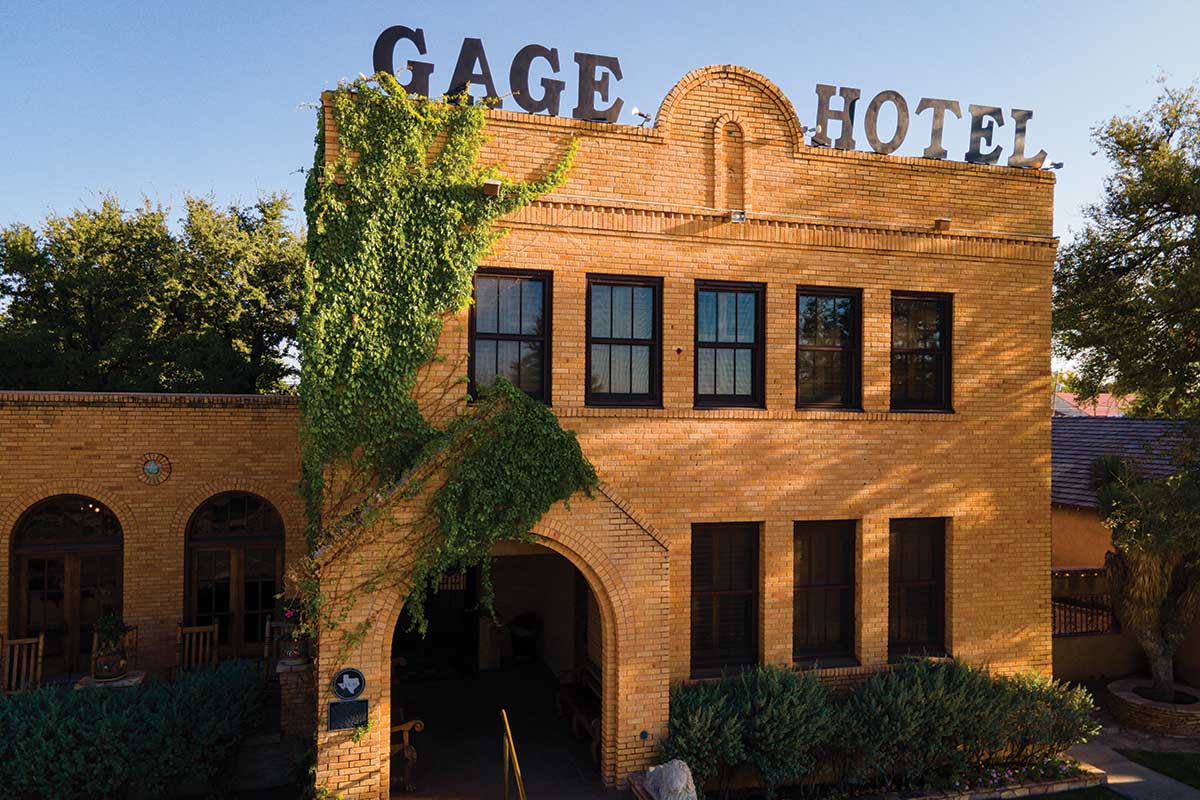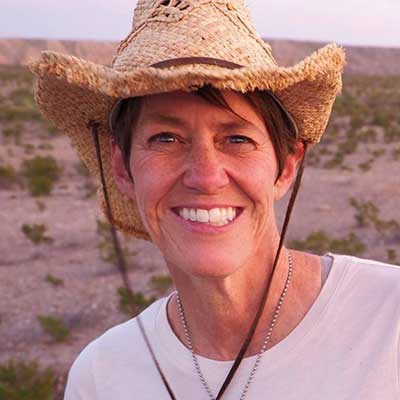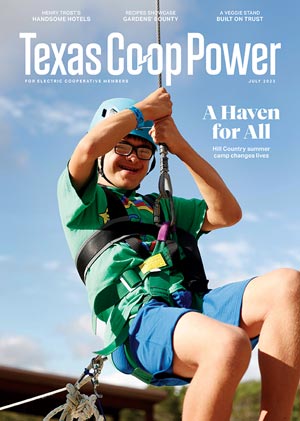Sit on a rocking chair on the front porch of the Gage Hotel in Marathon, and time slips away.
In the lobby behind you, a worn leather saddle hangs from the wall. Across the street, a train rumbles past. In the distance, a gray-green carpet of cactus and brush ripples into the distance like a prickly runway.
The view probably hasn’t changed much since architect Henry C. Trost designed this hotel nearly a century ago.
The two-story brick structure, with its arched entryway and wrought-iron door, is just one of hundreds of buildings—fire stations, city halls, high schools, banks and courthouses—that Trost designed across Texas, Arizona and New Mexico.
But it’s the four hotels scattered throughout far West Texas that many know best. They’re full of character, thoroughly Texan and located in a region of the state known for its dramatic landscapes and independent-minded residents. There was almost a fifth hotel here, too—architectural documents found at the El Paso Public Library indicate plans for a hotel in the small town of Valentine, also in the Big Bend.
“I would encourage people to get off the interstate, drive down into town to visit the hotels and take a step back in time,” says Margaret Smith, great-niece of Henry Trost and secretary of the board of the Trost Society, which works to preserve the architect’s work. “Learn the history that was made in the hotels and the history of the area.”
Born in 1860, Trost was the son of German immigrants. He moved from Toledo, Ohio, to El Paso in 1903 and co-founded Trost & Trost, an architectural firm, with brother Gustavus (Smith’s grandfather). A third brother, Adolphus, a structural engineer, joined later.
The company built its well-appointed West Texas hotels near railroad stations and designed them with spacious lobbies and large dining rooms to accommodate business dealings. Later, the hotels also became popular among families. The firm was also known for its artistic touches and for using reinforced concrete for fireproofing.
“The buildings look like a piece of art and not just a building,” Smith says. “That makes them stand out.”
Gage Hotel, Marathon
Trost “was considered the architect of the Southwest in those years,” says Carol Peterson, general manager. “If you were going to hire the best architect in those days, you would hire Henry Trost if you could.”
That’s what Alfred S. Gage did. The cattleman, who moved from Vermont to Texas in 1878 to seek his fortune, accumulated more than a half-million acres. He commissioned Trost to build a hotel that could double as a base to oversee his empire.
The hotel opened in 1927, but Gage died just a year later. A series of owners took over after his death, including one who tried to “spruce up” the hotel with dropped ceilings and linoleum floors.
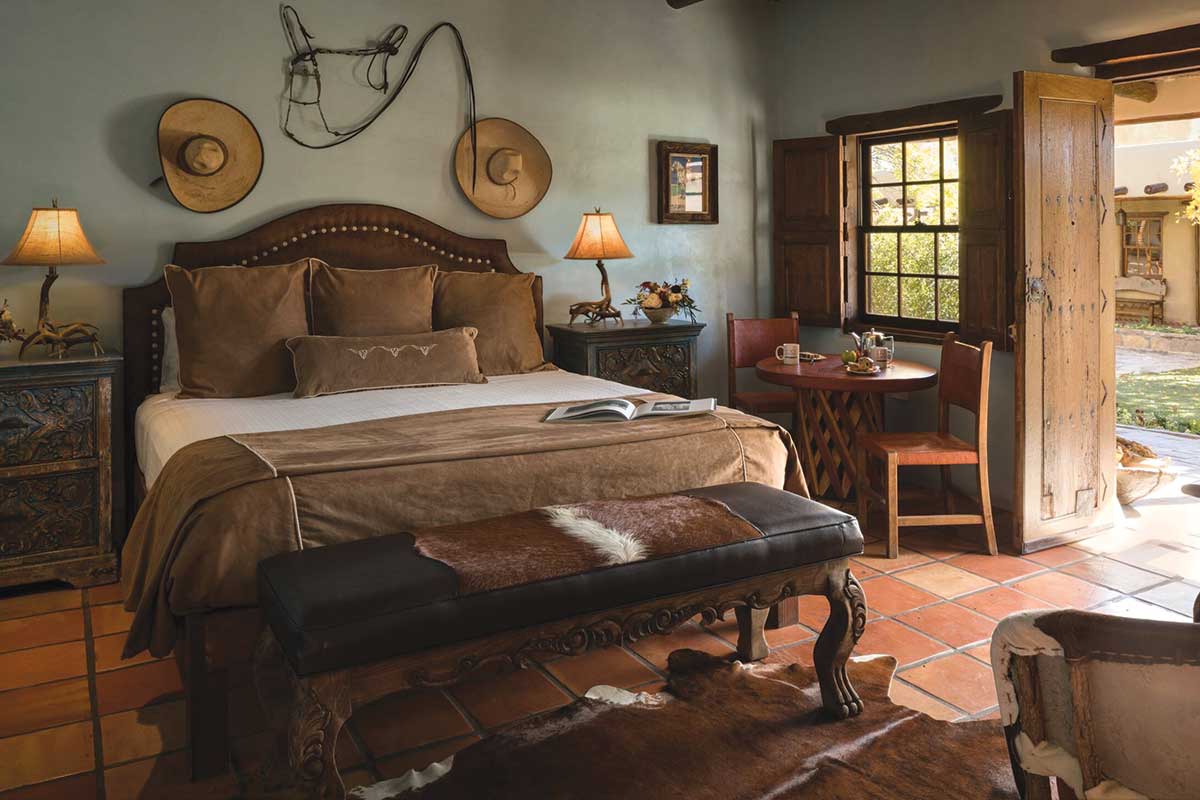
Marathon’s Gage Hotel features a grand lobby and rooms that are at once modern and rustic.
courtesy Gage Hotel
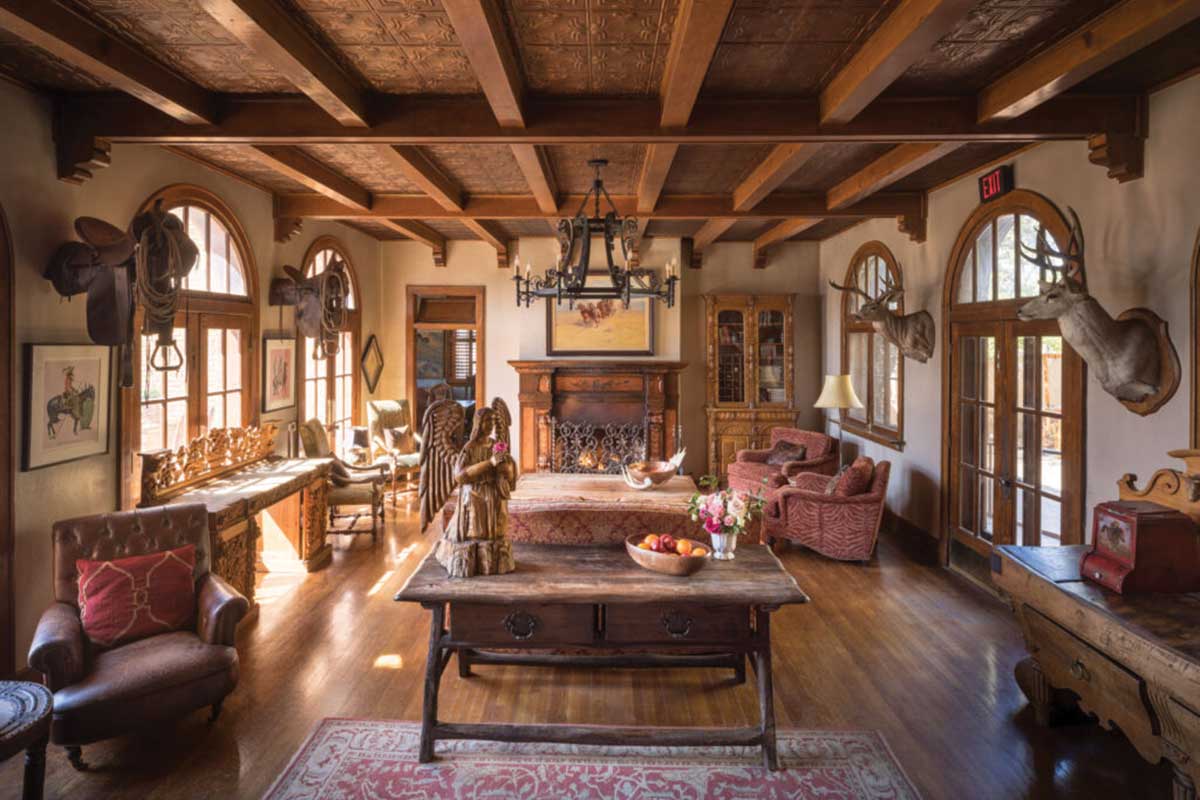
Marathon’s Gage Hotel features a grand lobby and rooms that are at once modern and rustic.
courtesy Gage Hotel
“[Trost] had a very wide-ranging style,” Peterson says. “The Gage is a bit more Mission style, as opposed to the Holland and Paisano.”
J.P. and Mary Jon Bryan of Houston bought and renovated the Gage in 1978, and they still own it today. In addition to 14 rooms in the original building, with its delightfully creaky wooden floors and ranch décor (including a stuffed mountain lion), guests can book more modern rooms in the Los Portales annex.
“It’s really become a very beloved, iconic Texas property,” Peterson says. “It’s not commercial, it’s not cookie cutter. Everything about it has a hand-touched feel.”
Holland Hotel, Alpine
Trost wasn’t involved in designing the original Holland Hotel, which opened in 1912. But he designed the “new” larger building, which opened next door in 1928 and was later connected to the first.
Sink into a comfy couch in front of the fireplace in the grand lobby, and you’ll see the same arched windows and decorative tiles of some of Trost’s other properties.
“The thing that makes the Holland special is the position it occupies in the town of Alpine—not geographically but in people’s minds,” says Alicia Fernbaugh, who manages the 27-room hotel and lives in what once served as the ballroom. “It’s very much the heart of the town.”
The building stood vacant in the 1960s and ’70s, and for a time in the ’80s, part of it was converted into offices. Over time, some of the old furnishings were sold off. Now and then, an old bedframe or chandelier discovered in an attic finds its way back home to the hotel.
The Century Bar and Grill, with its shady patio, is known for its margaritas and chicken-fried steak.
“It’s very welcoming and warm,” Fernbaugh says. “People feel very at home here.”
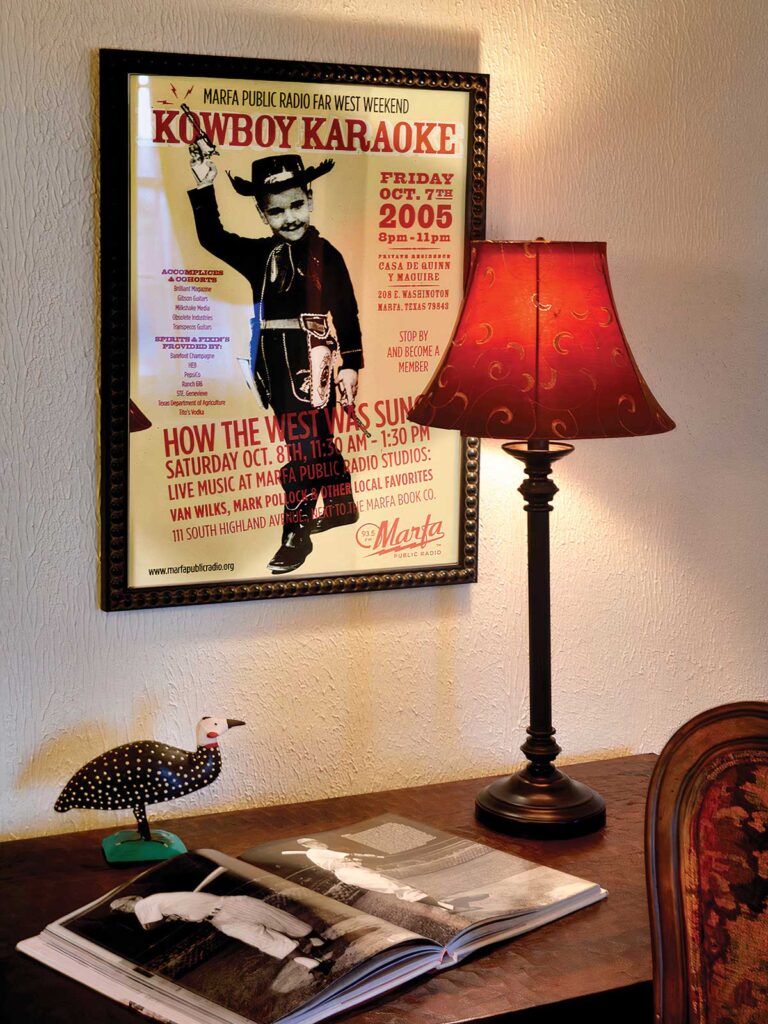
Holland Hotel décor.
Michael Howard | courtesy Holland Hotel
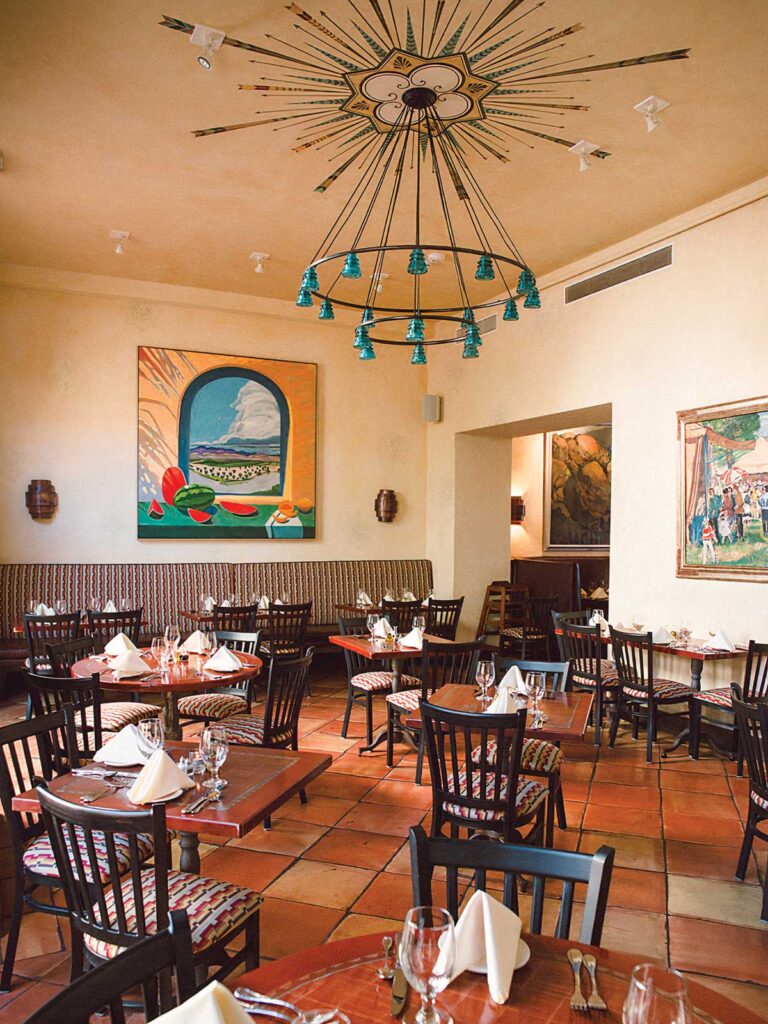
The Century Bar and Grill in Alpine’s Holland Hotel.
Lesley Villarreal | Courtesy Holland Hotel
Hotel El Capitan, Van Horn
Just two blocks off Interstate 10 in Van Horn, the red neon sign of Hotel El Capitan invites travel elers to pull off and enjoy a quiet respite in a mostly forgotten town.
The 50-room hotel, named for the rocky peak at Guadalupe Mountains National Park, an hour away, looks much like it did when it opened in 1930, as part of the Gateway chain of hotels operated by Charles Bassett in El Paso. Back then, ranchers gathered in the lobby to sell cattle, make land deals and sip coffee.
The Pueblo Revival-style concrete structure attracted cross-country travelers and tourists exploring nearby national parks. The hotel closed in the late 1960s, and a bank took over the space. Then in 2007, Lanna and Joe Duncan of Fort Davis, who also own the Paisano, bought it from the bank.
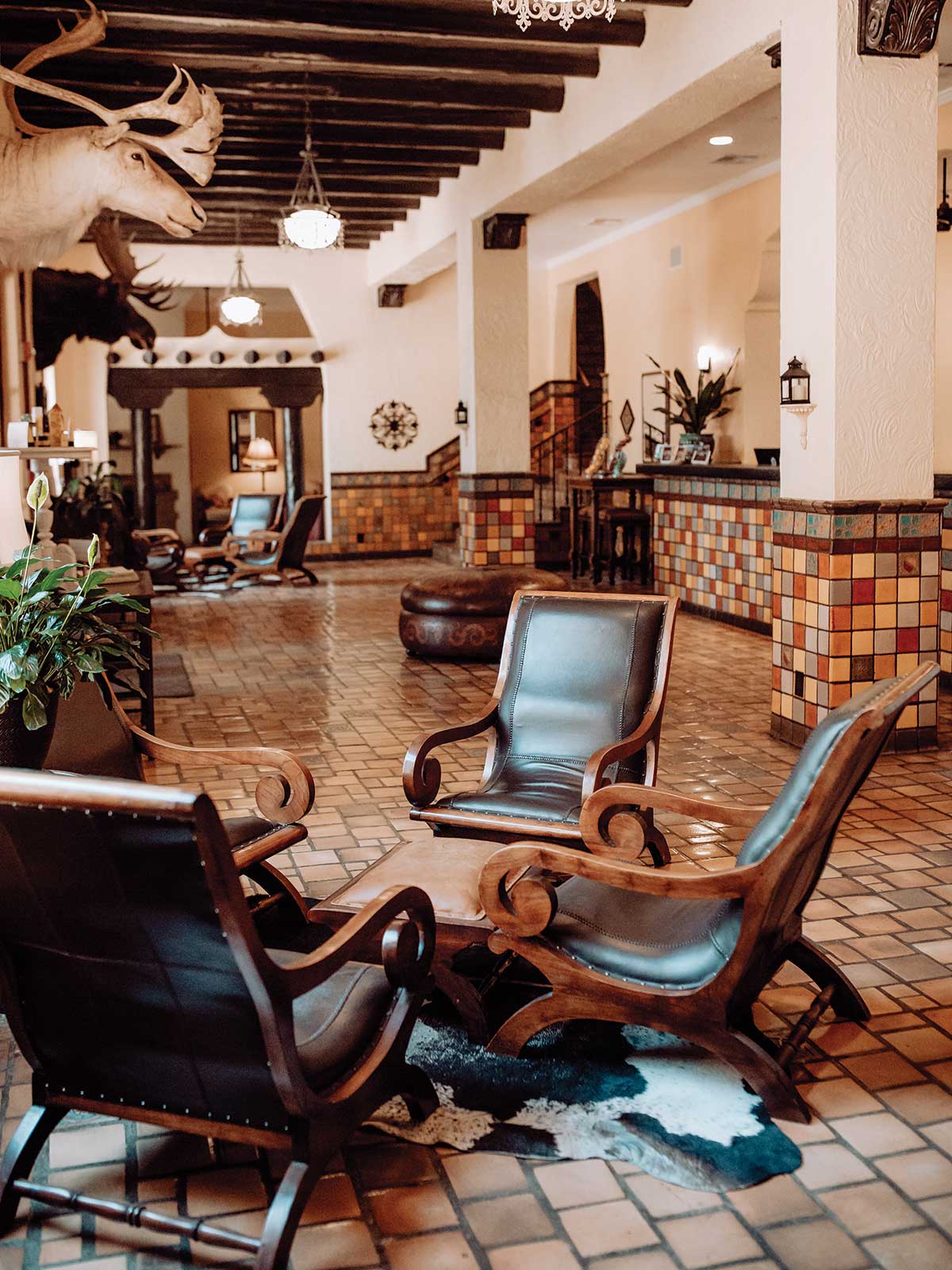
Hotel El Capitan’s inviting lobby.
courtesy Hotel El Capitan
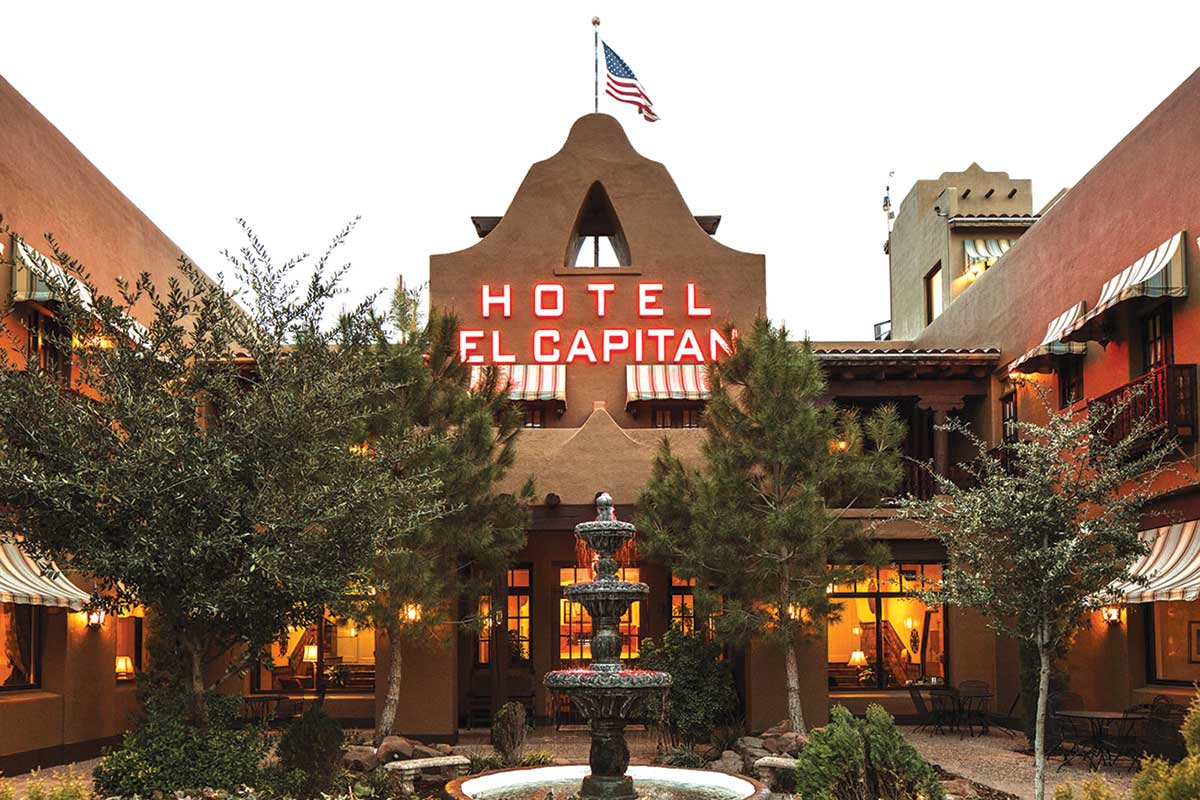
Outside, an inviting courtyard, and inside, a 5-cent cup of coffee.
courtesy Hotel el Capitan
“Although we are sister properties to the Paisano, and the layout inside is almost identical, the exterior is 100% different,” says Starvanna Cottrell, general manager. “El Capitan was made to look more like adobe, although it’s concrete. The Paisano’s exterior is much more European looking.”
A fountain burbles in the courtyard. In the lobby, colorful tiles, exposed wooden beams and wrought iron banisters add character. A sign salvaged from the old coffee shop hangs opposite the fireplace.
“And you can still get a 5-cent cup of coffee, no matter how you want it,” Cottrell says.
Hotel Paisano, Marfa
Another hotel in the Gateway chain, the Hotel Paisano in Marfa, also opened in 1930. “Hotels were built different years ago,” says Vicki Barge, general manager. “They were built with more of a sense of community.”
Step inside its lobby and you’ll find ornate tilework hand selected by Trost, leather chairs and a stuffed buffalo head.
Like the Gage, the Paisano had close ties to the cattle industry. When it opened, trains regularly stopped in Marfa to load and unload cattle. Several ranches kept offices at the hotel.
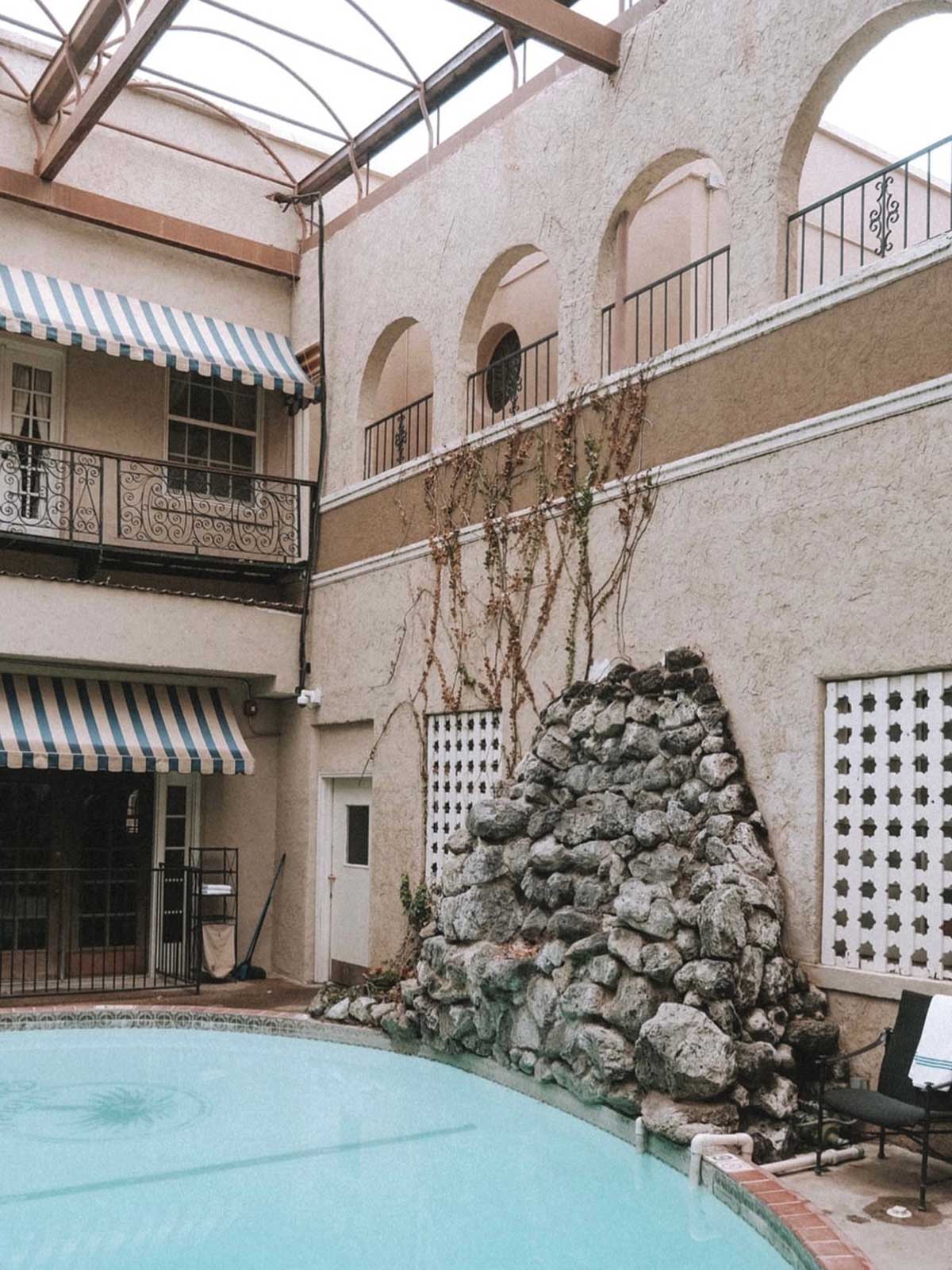
The Hotel Paisano’s pool was added in 1960.
courtesy Hotel Paisano
“He wanted his buildings to look like they belonged to the landscape, and he did a great job of that,” Barge says. “They do look like they should be just where they are.”
Many guests know the Paisano for its connection to the 1956 film Giant, starring James Dean. Photographs of Dean hang on walls, and the movie plays nonstop in the lobby.
Dean, along with co-stars Elizabeth Taylor, Rock Hudson and Dennis Hopper, stayed at the Paisano for about two weeks during filming. Today, guests can book one of the hotel’s 42 rooms or suites and swim in a pool that was added in 1960.
“I find it warm and friendly,” Barge says. “It’s kind of a look back at bygone days but still extremely viable now.”
